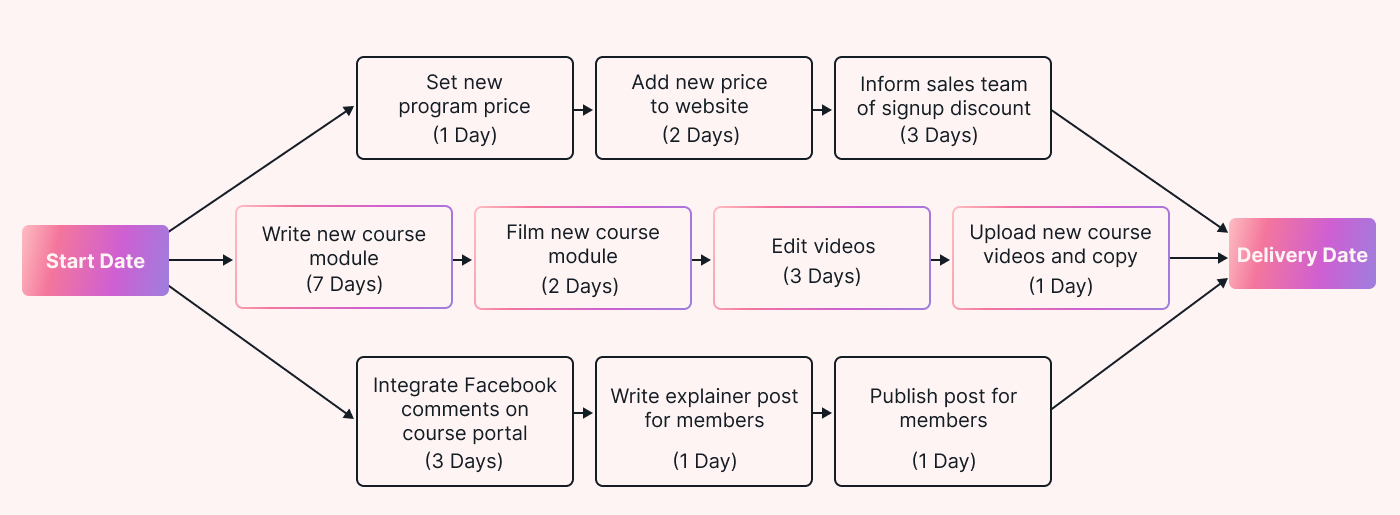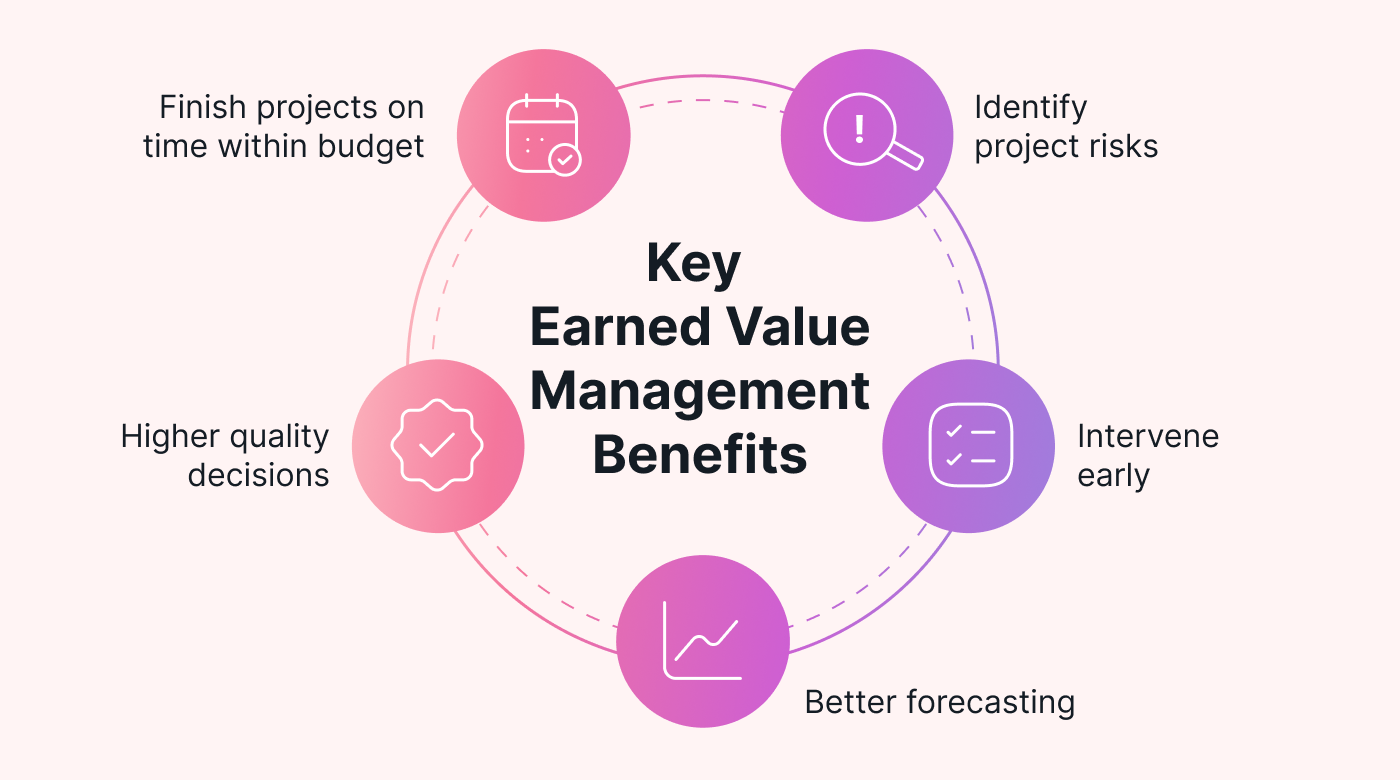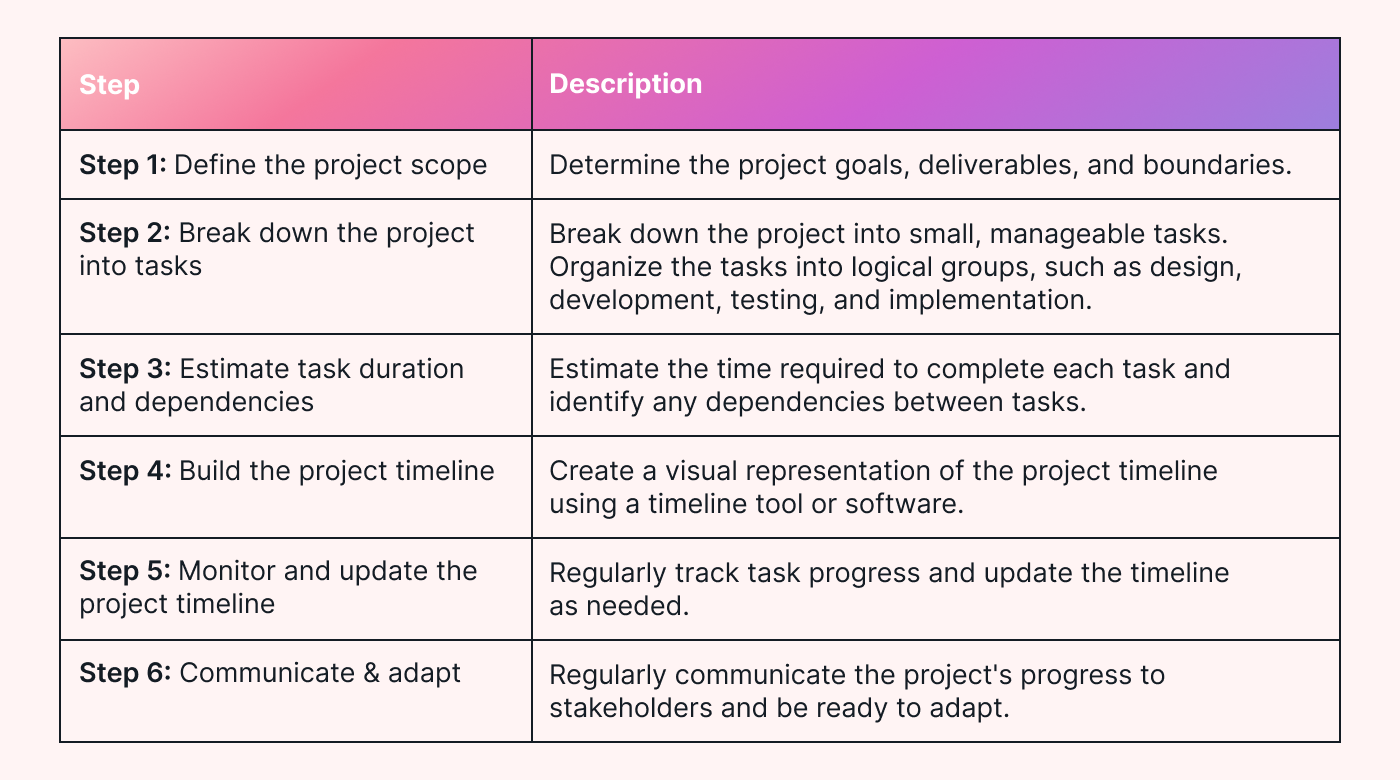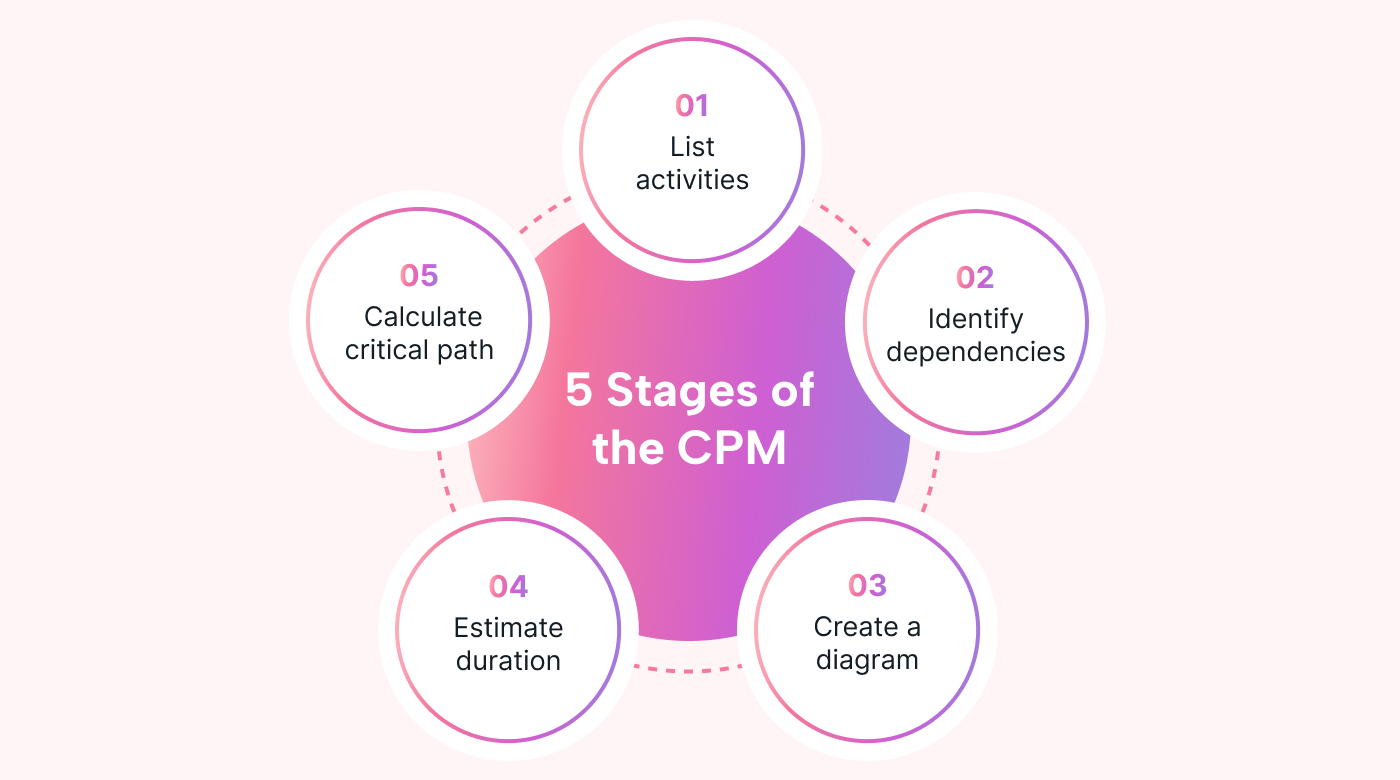If you ask your clients what matters most regarding your project management, you might be surprised by the answer.
Salesforce’s 2023 ‘State of The Connected Customer’ report found that 96% of customers say excellent customer service is the most critical factor in building trust with a business. 80% even said they would forgive a mistake if they received excellent customer service in resolving the issue.
There is no better way to provide excellent customer service than delivering client projects on time.
This article will walk you through providing your clients with accurate timelines for project delivery that they can trust.
What is estimated time of completion (ETC)?
“Estimated time of completion,” or ETC, is the expected date when you can anticipate your project will be finished. In the business world, timelines are more than just dates – they help you keep track of tasks, decide who’s responsible for each task, and manage your resources.
Knowing the ETC allows you to better understand how your project is going. It also makes it easier to plan how to allocate your resources to complete all project tasks on time.
There are two ways to figure out ETC, depending on where you are in the project.
1. Estimated time of completion at the beginning of your project
The estimated time of completion you calculate at the beginning of your project, also known as your delivery date, is calculated using various tools to help you determine when a project will be completed. These tools, such as a PERT chart or the CPM method, will be explored in more detail later in this article. By planning your schedule with these tools, you can give your client an accurate delivery date supported by careful calculations.
2. Estimating time of completion throughout project execution.
The second type of estimated time of completion is when you evaluate: given where you are now, when can project completion be achieved? Here are two examples of why ETA calculations mid-project are crucial:
Scenario:
Let’s say you’re about halfway through your deliverables but behind schedule by 25%. How should you derive ETC now? Can you pick up speed and meet the original timeline? If so, how?
Outcome one:
If you keep your current pace, you’ll still be late, but not later than you already are. Based on your calculations, you can continue at your current work rate and deliver on a date 25% later than first calculated.
Outcome two:
If your workload continues to pile up, your rate of schedule decline will also continue. By doing new calculations throughout your project, you realize your current work rate will make you 50% late.
By calculating ETA before and throughout project execution, you can provide more certainty to your client based on actual data rather than guesstimations.
So, how do you do these calculations? Well, first, we need to review some terminology.
Some quick definitions:
Earned value management (EVM)
EVM, which stands for earned value management, is a helpful tool to understand how your project is doing. It combines three essential things: cost, schedule, and what needs to be done or deliverables. EVM helps you see if your project is going as planned, if it’s costing more than expected, if it’s getting done faster, or if there are delays.
Two important numbers to pay attention to are the Cost Performance Index (CPI) and the Schedule Performance Index (SPI). These numbers can give you better insights into your progress.
The CPI shows if you're using your money efficiently, and the SPI shows if you're keeping up with the schedule.
By looking at these numbers, you can also get an idea whether your project will finish when you thought it would. EVM is a guidepost metric that tells you if your project is on the right path or if adjustments are needed. The better you understand these metrics, the quicker you can course-correct.
Resource utilization and leveling:
Making sure you use your resources wisely is essential to prevent delays and going over budget. If things are not going as planned, there are ways to fix it. These methods are called “resource-leveling.” What they do is help you get your project back on track. You can either add more resources to finish on time or give yourself more time by extending the timeline.
How you choose to do this depends on what’s most important for your project and your limitations. So, resource leveling is like a set of levers you can pull to ensure your project stays on schedule and doesn’t cost more than it should.
ETC and performance:
“Estimate to Complete,” ETC for short (yes, another ETC), is a way to guess how much more money you might need to complete your project. This prediction comes from looking at the Cost Performance Index (CPI), which helps you understand if you’re spending money as planned. Your ETC is like a health check for your project. It tells you how things are going and whether you have enough budget.
Imagine it as a tool to keep track of your project’s financial health. This can be useful to control your project’s budget and ensure everything goes smoothly.
Abbreviations aside, there is a lot to understand when estimating delivery dates.
How to accurately measure the time of completion in project management
A project timeline is a visual guide that shows your project’s journey from start to finish. It outlines the tasks and important points you must reach to succeed in your project. Picture it as a project roadmap, providing a clear view of:
- What’s needed: The tasks to be done.
- When it’s due: The deadlines for each task.
- Who’s in charge: The people responsible for each task.
A project timeline lets you see the big picture and plan better. This bird’s-eye view is vital for successful project management.
Key parts of a project timeline are:
- Project schedule: When the project starts and ends.
- Task list: The detailed tasks, broken into smaller parts if needed.
- Time needed: How long each task takes.
- Task connections: Tasks that depend on others finishing.
- Major goals: Important achievements in the timeline.
- Due dates: When tasks and milestones must be done.
There are six critical steps to create an accurate project timeline:
Your documented project timeline is a critical planning tool as you move through the project phases of the project management lifecycle.
How does estimated time of completion factor into the project management lifecycle?
How does ETC factor into the other phases of the project management lifecycle?
Initiation phase
In the initiation phase, estimate time of completion:
- Sets realistic expectations and secures resources
- Outlines project scope and goals and gets your client aligned before the project begins
Planning phase
In the planning phase, ETC:
- Forms the foundation of the project schedule
- Enables task sequencing and identifies dependencies
- Supports efficient resource allocation to make sure you’re not overloading your staff
- Facilitates risk assessment and mitigation strategies: If you know what is due and when it’s easier to notice when you’re off track and change direction
Execution, monitoring, and control phases
These phases happen at the same time. In these phases, estimate the time of completion:
- Guides progress tracking and deviation identification
- Promotes timely adjustments to maintain project course
- Enhances communication among team members and stakeholders
- Enables real-time tracking of project progress
- Identifies potential bottlenecks and resource optimization
- Prevents project overruns and makes sure you stay on track
Closure phase
In the closure phase, ETC:
- Contributes to evaluating project performance.
- Assesses goal achievement within projected timeframes.
- Provides insights and lessons for future projects.
The estimated time of completion acts as a compass, guiding the project management lifecycle from initiation through closure. It ensures everyone is on the same page, your resources are being used correctly, and your project is completed successfully.
Other methods to calculate the time of completion in project management
You can use specific techniques and tools to accurately calculate your project timelines and estimate completion time whether your project is just starting or you’re mid-project.
Critical path method (CPM)
CPM, or the critical path method, is a vital project management technique. It identifies the most critical tasks and their dependencies so you can see everything that is due in the order it’s due. It also highlights what is essential to project success.
The five phases of CPM are:
- List activities: Identify all tasks and activities required for the project.
- Identify dependencies: Determine relationships between tasks, identifying which tasks rely on others.
- Create a diagram: Construct a visual map such as a PERT chart (discussed next) to display task sequencing and dependencies along the timeline.
- Estimate durations of tasks: Assign time estimates to each task based on historical data or your expert judgment.
- Calculate the critical path: Analyze the sequence of tasks in order and determine the longest path to project completion, indicating the minimum time needed.
PERT charts
A PERT (program evaluation and review technique) chart is an excellent way to visually map your project with all task dependencies and the critical path mapped.
PERT charts allow you to create estimated completion dates you and your clients can trust because all variables, dependencies, and the critical path are factored into your calculations.
Steps to creating a PERT chart:
- Identify tasks: List all project tasks and activities that need to be completed, ensuring a comprehensive scope.
- Determine dependencies: Establish the relationships between tasks, identifying which tasks must be completed before others can start.
- Estimate time: Assign optimistic, pessimistic, and most likely time estimates for each task. Use these values to calculate expected durations.
- Create the chart: Draw a PERT network diagram, representing tasks as nodes and connecting them with arrows to depict their sequential order and dependencies.
- Calculate critical path: Analyze the diagram to find the longest path through the network, representing the critical path. This path indicates the minimum time needed to complete the project.
 |
See this example of a PERT chart outlining the creation of a new online course module for an online training company. You can see all tasks outlined with their dependencies, but only the critical path is highlighted.
What’s next for your project time management?
Intelligent project management software helps you estimate the time of completion for your projects by giving you a centralized platform to track projects. You can even monitor your ongoing project to ensure you’re on track to meet your project deadline.
An automated project management tool like Motion can give you a real-time overview of the status of your tasks, keeping you and your team on track. Visual tracking in Motion will make your project management much more manageable.
Reduce your manual planning and tracking time by using Motion’s Intelligent Calendar to assign tasks to your team and auto-track task statuses as you go. Stay on track. Grab your 7-day free trial today.








